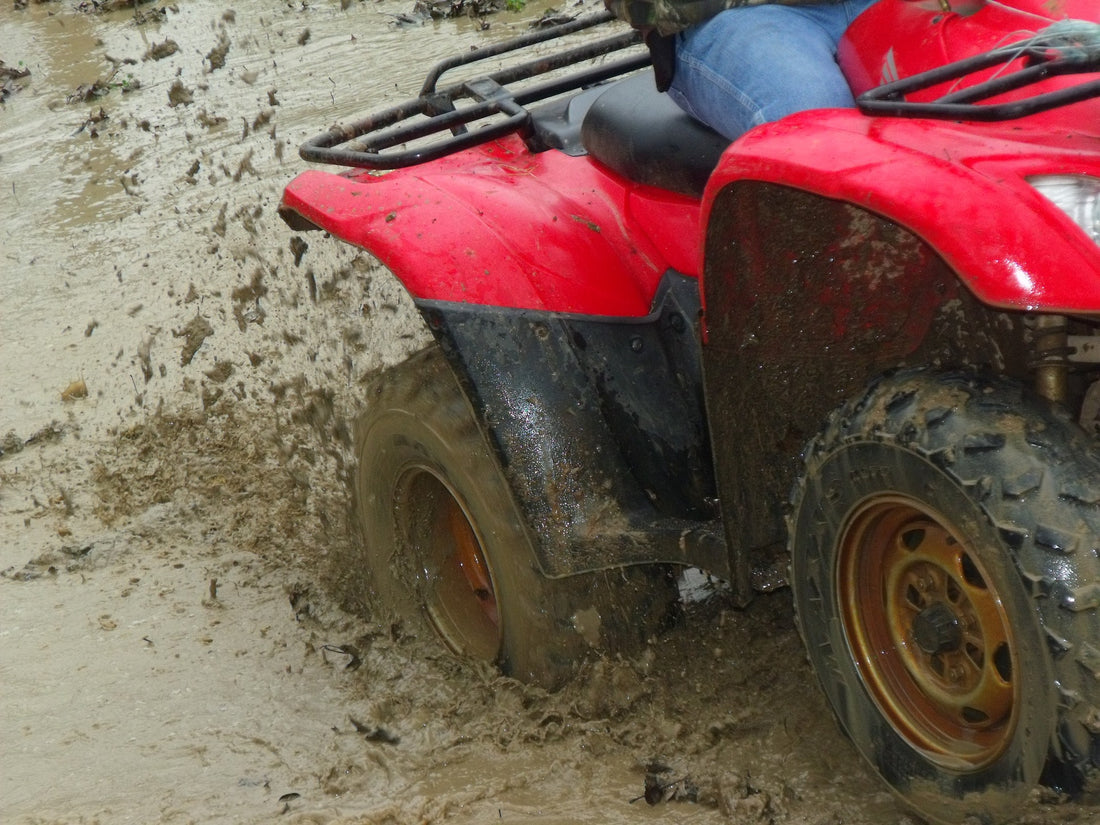
Which Tires Should You Buy for Your Off-Road Vehicle
Share
Tires are one of the most important aspects of the automotive combustion engine because all the power in the world won't make a block of metal move. With ATVs, UTVs and Bikes there are just so many tires out there to choose from. In this blog we'll look at the choices out there and help decipher what tire’s right for you.
When looking at tires you’ll see three different numbers which state, in this order: The height, width and the size of rims these tires can be mounted on. For example let’s breakdown “25-8-12,” the 25 would mean these tires are 25 inches tall, the 8 inches wide and can be placed on a 12 inch rim.
Vehicle manufacturers match their OEM tires with the specs of the new vehicle; the engine, gearing and handling. This is why most people recommend you stay at the same size they put on. But not everyone likes to do that, some people like to buck the trend and go the performance route, really do anything, especially go against those “manufacturer suggestions” to go a little bit faster.
If you're looking to go outside the OEM's tire size then it's important to know size impacts your vehicle’s abilities. Larger tires will increase your top speed and make for a softer ride; however there are some down sides. Larger tires will limit your ability to burst right off the starting line and if you go too big, the engine can be overloaded because it’s trying to produce the energy needed to push those mammoths, and ultimately the frame, the shocks and a number of other parts will wear out early because of the size.
Going smaller is basically just the opposite of going bigger, it'll pick up speed faster right off the starting line, but you won't be performing as well during the race and if you go too small you'll have less control and risk damaging your vehicle.
The Different Types of Tires
Other than size, there are a variety of different types of tires that are better suited for the different environments you may find yourself in, whether that’s on a trail, gliding through mud, skipping on sand or racing down a closed track.
Tail Tires (or All-Terrain)
These tires are the jack of all trades and master of none; they are decent for any terrain; however they don’t exactly excel on one particular terrain over another. These tires are used when you don’t want the maintenance of switching out your tires all the time, which makes up for them not being as good. If you’re looking to spend most of your time in one particular environment these are not the tires for you. We suggest looking at the more specialized tires we’ll be discussing below.
Mud
These tires are great for that wet and sloppy terrain whether that be mud or sticky snow. Mud tires are made to drive through the thick muck and typically have wide spaced, irregular and wide treads that disperse the mud and dirt instead of keeping it inside the tread giving you better traction in the mud. It’s possible to use these tires on other terrain, but it’s a rough ride and these tires will wear much quicker than in their intended environment
Sand
When riding on the sand it’s easy to find yourself in a situation where you’re driving up a sand dune, see the light of success, only to find your vehicle sliding on back down. Lack of traction is a crappy feeling and one that will likely replay itself over and over again until you pony up for some specialized tires. Sand tires are also referred to as paddle tires because of the paddle looking ridges on the back tires. These paddles make for a more stable ride taking away that feeling of having no control.
Racing
If you’re looking to scratch that competitive itch then you should take a look at racing tires. Racing tires come in many different shapes made specifically for the medium to hard packed terrain found on most tracks. Each track is made a little different and veteran racers will know what kind of racing tire they’ll need, for beginners it will take some time and some effort to figure out which tire works best for you on whatever track you’re racing on. Once you get to that point you'll really appreciate the different kinds of racing tires.
Tires are not cheap and you’ll want to keep them maintained, keep them full of air, and check them for tread or other damage. Damaged tires will fail and that could leave you stranded with no way to back. Also, remember that how you ride definitely affects the life expectancy of your tires, going fast and hammering the breaks will wear them out much faster than a slow gradual stop.
There’s a lot of thought that goes into picking a set of tires and we hope this blog gives you a bit of clarity when making your decision. We may not sell tires at partdiscounter.com, but tires will have a massive effect on the parts we do sell. Their life and their performance are greatly influenced by the tires you put on your vehicle.
Have any questions about tires or want a place to inspire others to make a monster machine then leave a comment below.
Sources:
- The ATV and UTV Tire Buyers Guide: http://www.bikebandit.com/blog/post/the-atv-and-ut...
- The 5 Tire Types that Help You Get a Grip in different Terrains: https://www.rockymountainatvmc.com/rm-rider-exchan...
- How to Choose New ATV Tires: http://www.atv.com/features/how-to-choose-new-atv-...